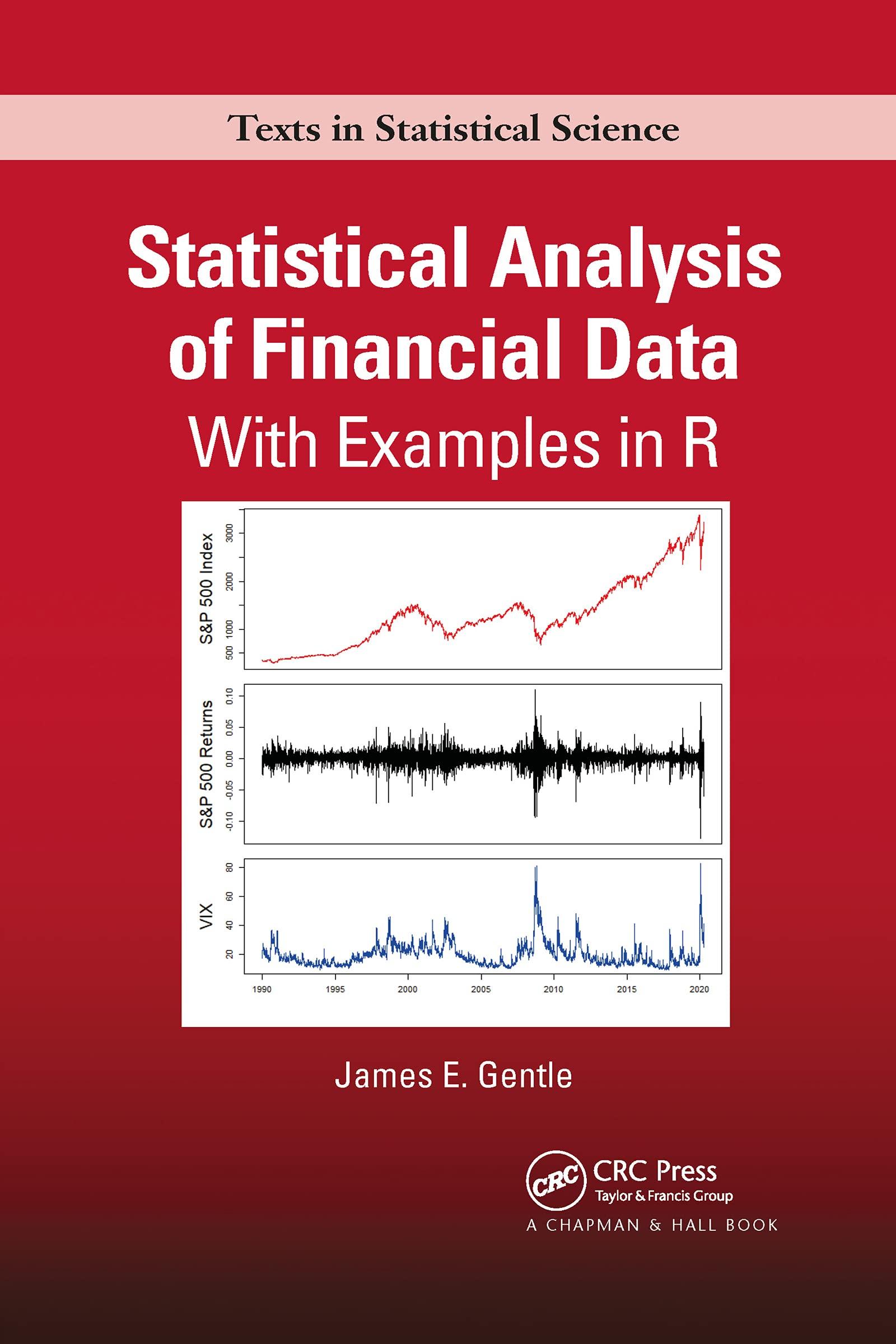Some previous exercises have involved model (theoretical) properties of an (mathrm{AR}(2)) process. In this exercise, you are
Question:
Some previous exercises have involved model (theoretical) properties of an \(\mathrm{AR}(2)\) process. In this exercise, you are to use simulated data from an \(\mathrm{AR}(2)\) process.
For each part of this exercise, generate 1,000 observations from the causal AR(2) model
\[ x_{t}=\sqrt{2} x_{t-1}-\frac{1}{2} x_{t-2}+w_{t} \]
where \(w_{t}\) has a standardized \(t\) distribution with 5 degrees of freedom, and variance of 1 (equation (3.96)).
(a) Write the code to generate the data as specified, and plot the time series.
(b) Compute the ACF and the PACF for 15 lags.
(c) Use the Yule-Walker equations and the sample ACF to compute estimates of \(\phi_{1}\) and \(\phi_{2}\).
(d) Estimate \(\phi_{1}\) and \(\phi_{2}\) using maximum likelihood (assuming a normal distribution).
\(\left(1-\phi_1 \mathrm{~B}-\cdots-\phi_p \mathrm{~B}^p\right)\left(x_t\right)=\phi_0+w_t, \tag{5.96}\)
Step by Step Answer:





